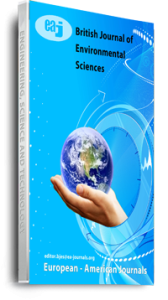The paper examined the concentrations of heavy metals and microbial parameters in groundwater and were compared to World Health Organisation (WHO)guidelines and National Standard for Drinking Water Quality standard. A total of 800 boreholes and wells water samples were purposefully and systematically collected in the metropolis and subjected to laboratory analysis where mean concentration values of Cadmium, Chromium, Zinc, Iron, Lead, Mercury, Arsenic, Copper, Manganese, Total Coliform count and Escherichia coli were determined in line with APHA 1998 standard procedures. The T- test statistical analysis, p<0.05 results showed that there were high and low significant variations between the concentrations values of heavy metals with WHO and NSDWQ permissible limits especially during wet season while microbial parameters only showed high significant variations except Zinc, Mercury, and Arsenic recorded no significant differences. The study therefore drew inference that wastewater and geomorphic processes contribute significantly to groundwater contaminations in the metropolis and recommends public education and enlightenment, strong legislation, provision of standard water treatment plants, adoption sustainable environmental concepts, attitudinal change, good drainage system should strictly be adhered to in order to harness good drinkable water potentials.
Keywords: Groundwater, Heavy Metals, infiltration and concentration, wastewater

